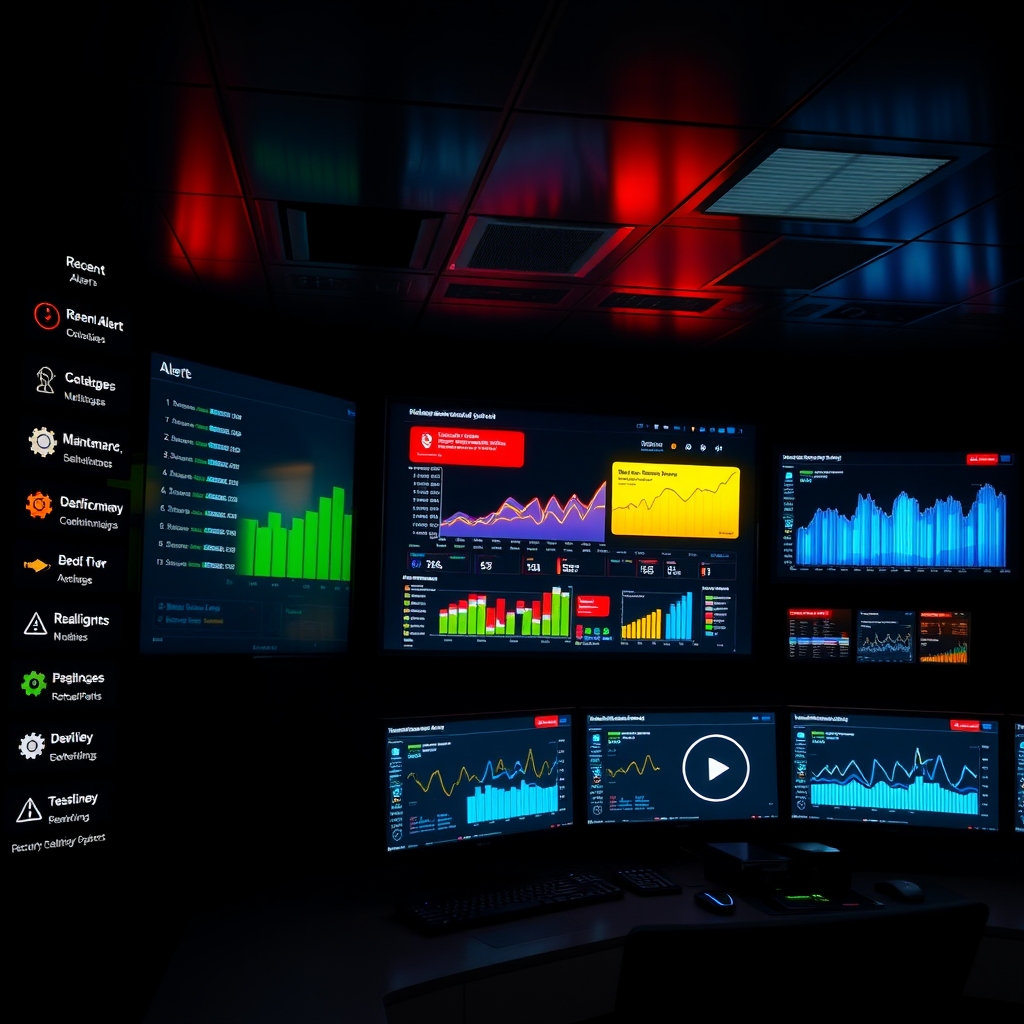Tracking Downtime Trends for Your APIs Using Alert Platform

Tracking Downtime Trends for Your APIs Using Alert Platform
Understanding the Importance of API Monitoring
In today's digital landscape, APIs are the backbone of many applications and services. They facilitate communication between different software components, enabling seamless integration and functionality.
However, with the increasing reliance on APIs, the need for robust monitoring solutions has never been more critical. Downtime can lead to significant revenue loss, customer dissatisfaction, and damage to brand reputation.
This is where the Uptime API comes into play. By providing comprehensive monitoring and uptime tracking, it empowers businesses to maintain high availability and performance for their APIs.
Key Features of Uptime API
The Uptime API offers a range of features designed to meet the diverse needs of businesses. Here are some of the standout capabilities:
- Real-time monitoring: With check intervals as short as 60 seconds, you can stay updated on your API's status.
- Customizable alert notifications: Receive alerts via email, SMS, webhook, or Slack, ensuring you never miss critical updates.
- Performance metrics: Track response times, uptime percentages, and error rates to gauge your API's health.
- Historical data and trend analysis: Analyze past performance to identify patterns and improve reliability.
- SSL certificate monitoring: Get alerts for SSL certificate expirations to maintain secure connections.
- Keyword monitoring: Validate content to ensure your API returns the expected data.
- Multi-location monitoring: Monitor your API from various global locations for comprehensive coverage.
Types of Monitoring Offered
The Uptime API supports various monitoring types, ensuring that it can cater to different business needs:
- HTTP/HTTPS APIs
- Public APIs
- Private APIs
- Keyword-based monitoring
- Custom status codes
- Response time tracking
Notification Channels for Immediate Alerts
Staying informed about your API's status is crucial. The Uptime API provides multiple notification channels to ensure you receive alerts in a timely manner:
- SMS
- Webhook
- Slack
Example API Responses
Monitoring Status
The Uptime API provides detailed responses that help you understand your API's current status. Here’s an example of a monitoring status response:
{
"success": true,
"data": {
"monitor": {
"id": "mon_123456",
"name": "API Health Check",
"url": "https:\/\/api.example.com\/health",
"status": "up",
"uptime": 99.95,
"response_time": 245,
"last_check": "2024-03-20T10:30:00Z",
"ssl_status": "valid",
"ssl_expiry": "2025-01-15T00:00:00Z"
}
}
}Alert Configuration
Configuring alerts is straightforward with the Uptime API. Here’s an example of how an alert configuration might look:
{
"success": true,
"data": {
"alert": {
"id": "alert_789",
"name": "Downtime Alert",
"type": "email",
"recipients": [
"[email protected]"
],
"conditions": {
"status": "down",
"duration": "5 minutes"
},
"enabled": true
}
}
}Performance Metrics
Understanding performance metrics is essential for maintaining API health. Here’s an example of performance metrics data:
{
"success": true,
"data": {
"metrics": {
"uptime_24h": 99.98,
"uptime_7d": 99.95,
"uptime_30d": 99.92,
"avg_response_time": 234,
"max_response_time": 1250,
"min_response_time": 89,
"total_checks": 1440,
"successful_checks": 1439,
"failed_checks": 1
}
}
}Use Cases for Uptime API
The versatility of the Uptime API makes it suitable for various industries and applications. Here are some compelling use cases:
- E-commerce platforms: Monitor payment APIs to ensure transactions are processed smoothly.
- SaaS applications: Ensure service availability for customers relying on your software.
- Mobile apps: Monitor backend services to provide a seamless user experience.
- Financial services: Track critical APIs to maintain compliance and operational efficiency.
- Healthcare systems: Monitor patient data APIs to ensure timely access to information.
- Gaming platforms: Monitor real-time services to enhance user engagement.
- IoT applications: Monitor device connectivity to ensure reliable performance.
Frequently Asked Questions
What is the Uptime API?
The Uptime API is a comprehensive monitoring solution that tracks the availability and performance of APIs, websites, and services.
How does real-time monitoring work?
The Uptime API performs checks at 60-second intervals, providing real-time updates on your API's status and performance metrics.
What types of notifications can I receive?
You can receive alerts via email, SMS, webhook, or Slack, allowing you to choose the most convenient method for your team.
Can I monitor private APIs?
Yes, the Uptime API supports monitoring for both public and private APIs, ensuring comprehensive coverage for all your services.
How can I analyze historical data?
The Uptime API provides access to historical data, allowing you to analyze trends and performance over time to make informed decisions.
Conclusion
In conclusion, tracking downtime trends for your APIs is essential for maintaining high service availability and performance. The Uptime API stands out as a superior choice for businesses looking to implement effective monitoring solutions.
With its robust features, including real-time monitoring, customizable alerts, and comprehensive performance metrics, the Uptime API provides the insights necessary to make data-driven decisions. By leveraging its capabilities, businesses can proactively address potential issues, ensuring that their APIs remain operational and efficient.
Moreover, the ability to analyze historical data and trends allows organizations to identify patterns that can inform future strategies. As businesses continue to evolve and rely more heavily on APIs, the importance of a reliable monitoring solution like the Uptime API cannot be overstated.
Looking ahead, the potential for integrations with other tools and platforms presents exciting opportunities for enhancing monitoring capabilities. By choosing the Uptime API, businesses are not only investing in a monitoring solution but also positioning themselves for future growth and success in an increasingly digital world.